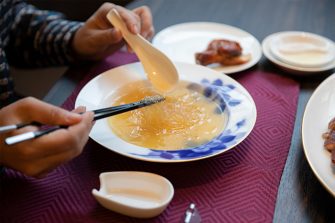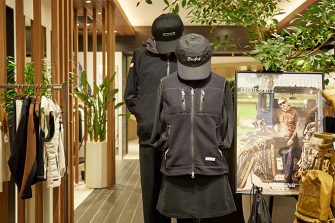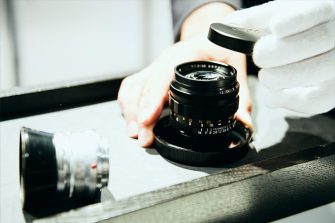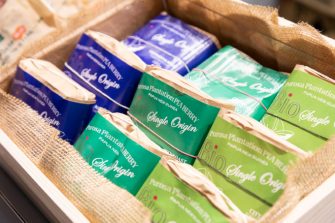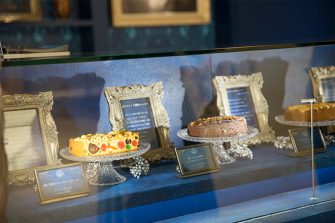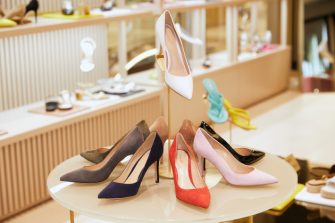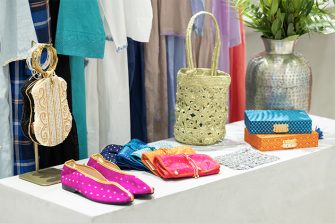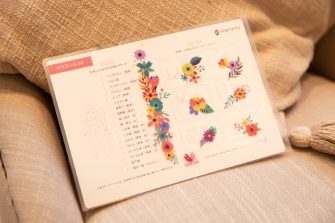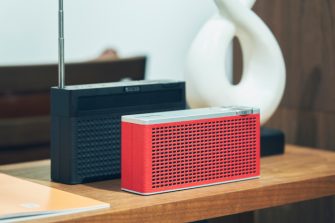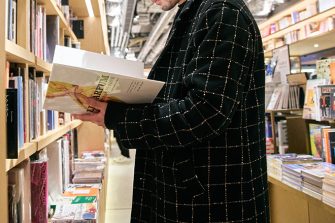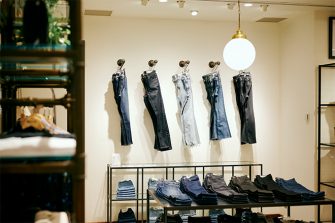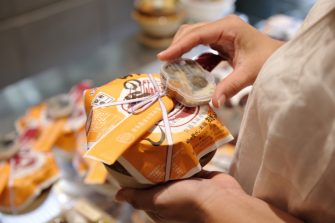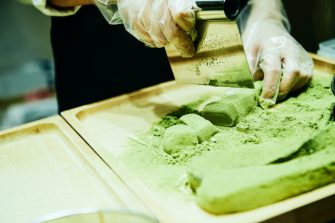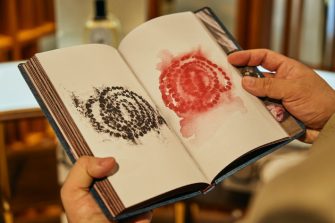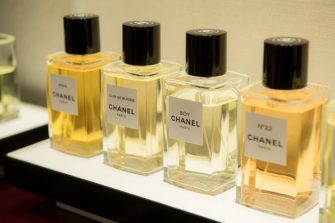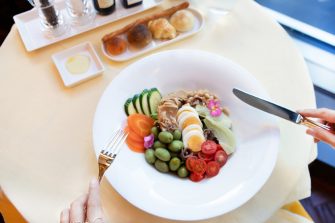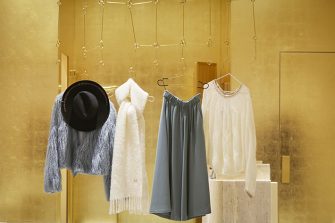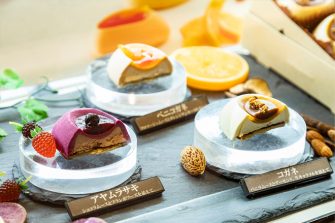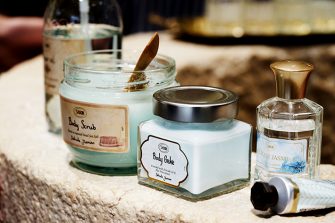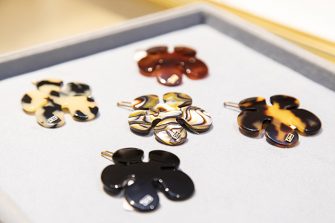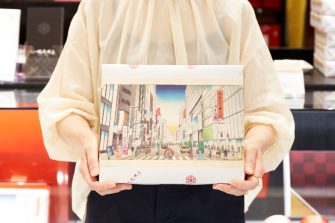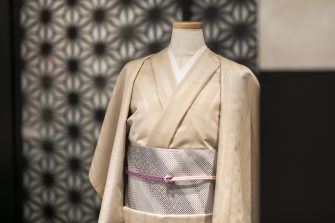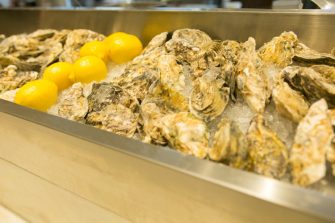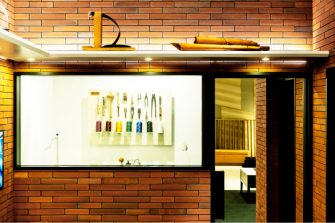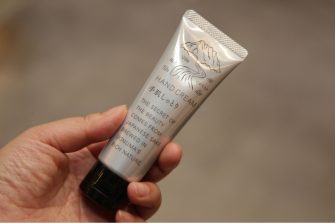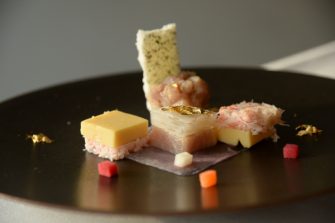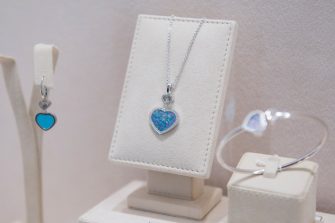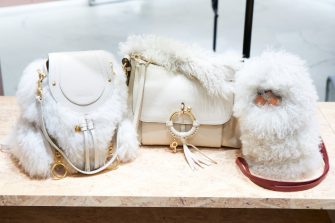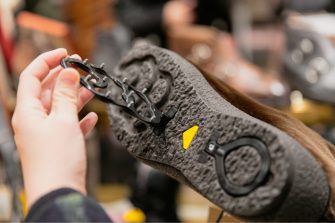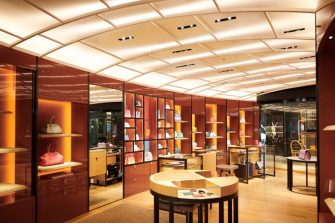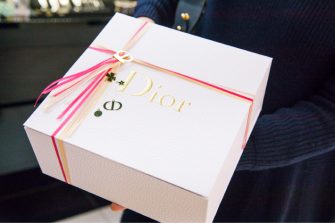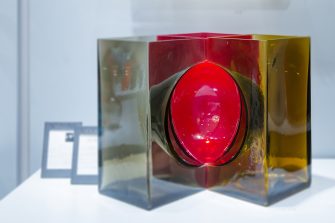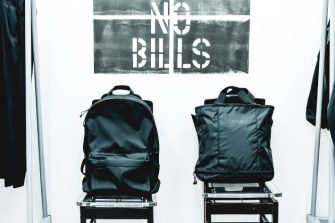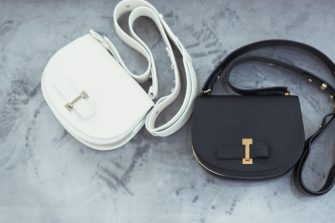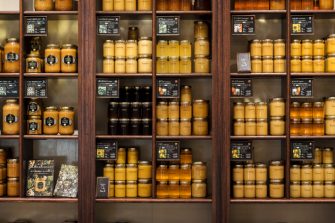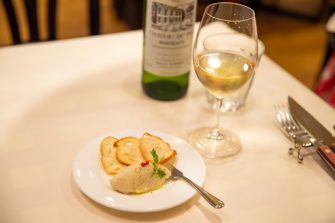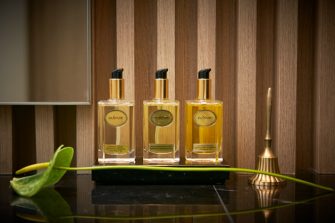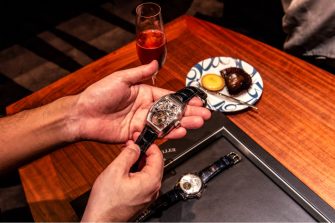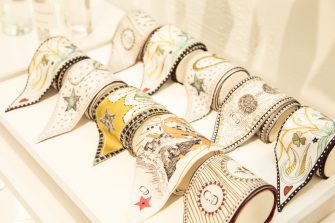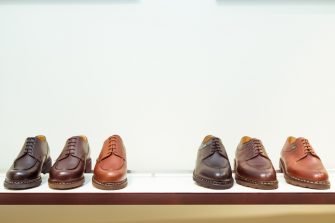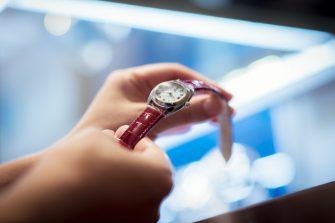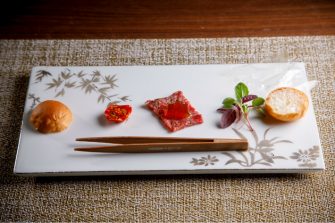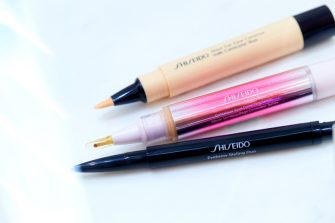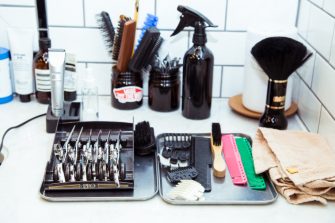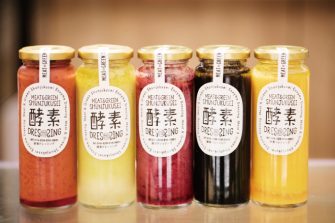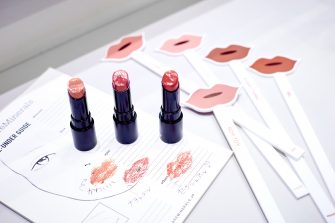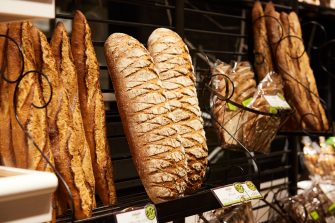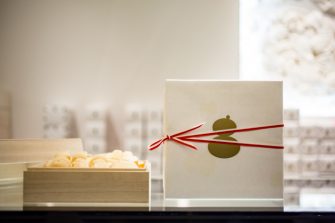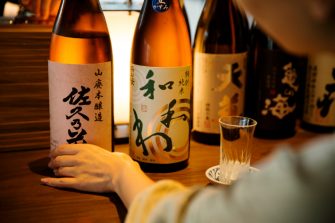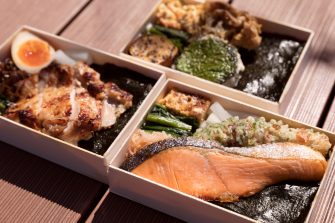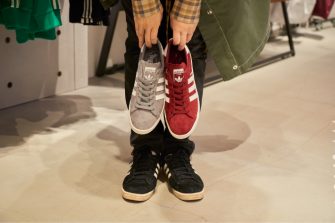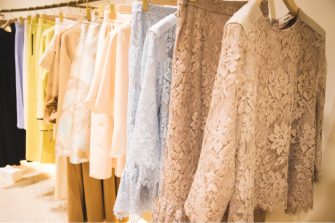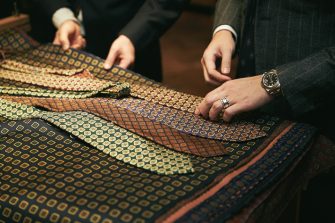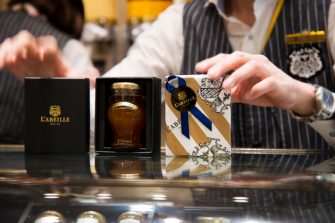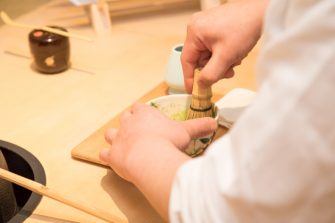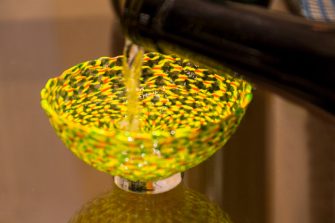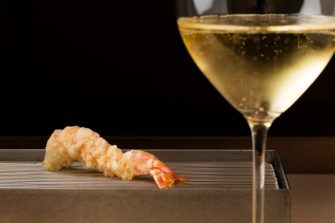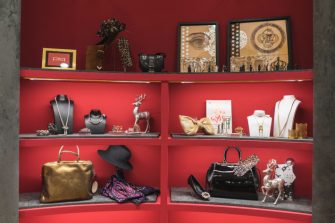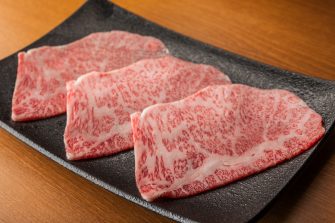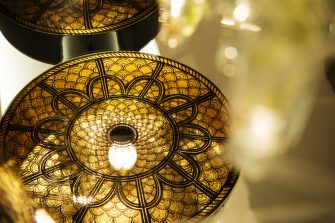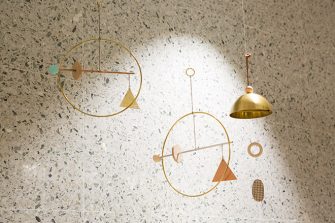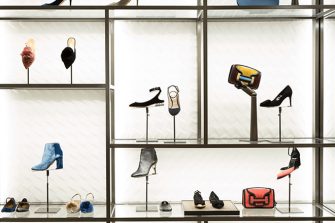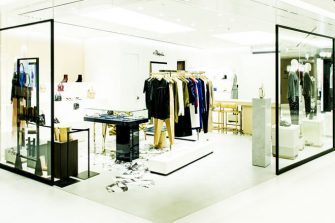

GINZA SIX EDITORS
ファッション、ジュエリー&ウォッチ、ライフスタイル、ビューティ、フード…
各ジャンルに精通する個性豊かなエディターたちが、GINZA SIXをぶらぶらと
歩いて見つけた楽しみ方を綴ります。
FINDING LOST ART 失われたアートを取り戻そう! Finding Lost Art!
高田 景太
GINZA SIX EDITORS Vol.99
ぼくはショッピングが好きじゃない。あてもなくぶらぶらと見て回ったり、ウインドウを眺めたり、“偶然の出会い”を求めて歩くなんて、大の苦手。前もって欲しいものを調査して、それにめがけて突進する。“ぶらぶら”はせずに、“きびきび”──それがぼくの買物道である。
ただそんなこだわりも、ショッピングが目的ではなく手段になれば、話は別だ。歳を重ねて物欲は少し落ち着いたけれど、“あんな紳士になりたい”とか“こんな生き方をしたい”といった願望はたまに出現する。そんなときショッピングはミッションに変わる。
最近は自粛期間が長いから、家での生活を豊かにしたいという気持ちが芽生えた。そこで、このGINZA SIXでのショッピングのテーマを「FINDING LOST ART 失われたアートを取り戻そう!」に決めた。インディー・ジョーンズやララ・クロフトのように命をかけた冒険ではないけれど、生活に潜むアートを掘り起こす。これが今回のぼくのミッションだ。
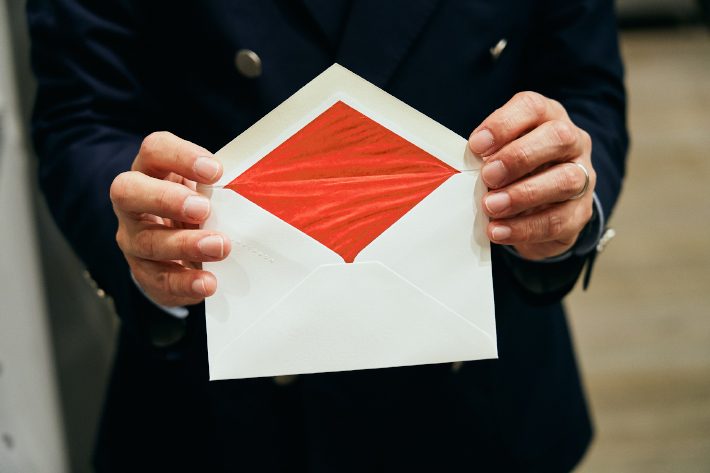
GINZA SIXでは3つのミッションを遂行する。1つ目は「手紙を書くことを嗜む」。
編集者の仕事をしていると、手紙を書く機会が多い。お礼状と、ときにお詫び状。必要に迫られて書くケースがほとんど。しかしまれに、ぼくにも手紙や葉書が届くことがある。「俳優◯◯さんを掲載してくれてありがとう」とか「歌手○○さんのファンです。特集してください」といった内容である。そんな愛の言葉を並べられると、それが自分に向けられたものでないとわかっていても、心を動かされる。手紙とはそんな不思議な作用がある。
いまや2割以上の人が過去1年間に1度も手紙を書いたことがないらしい。そんな失われた芸術を取り戻すため、まずは一級品のレターセットを探すことから始めたい。
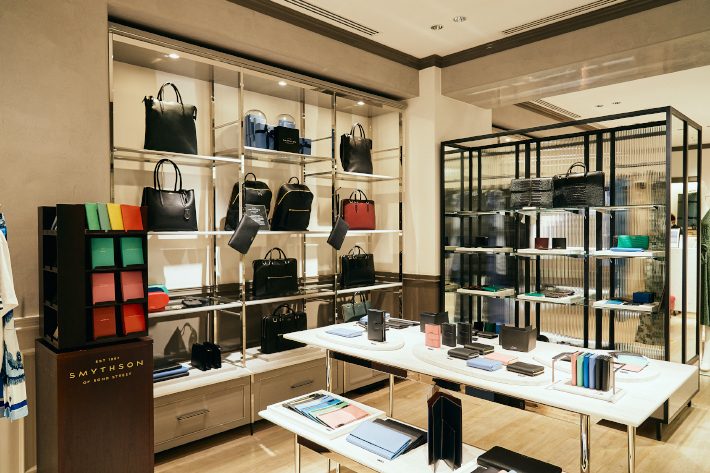
訪れたのは4Fのセレクトショップ「ヴァルカナイズ・ロンドン」にある英国ブランド、スマイソン。英国王室のお墨付きであるロイヤルワラントを3つ獲得した由緒正しき老舗である。ストアマネージャーの紅林直利さんが案内してくれた。

「スマイソンの代名詞といえば、便せんや封筒に使われる「ナイルブルー」の色。創業者のフランク・スマイソンがエジプトを旅したときに感銘を受けたナイル川から考案されたものです。創業地から名付けられた「ボンドストリートブルー」のペールブルーも人気ですよ」と紅林さん。
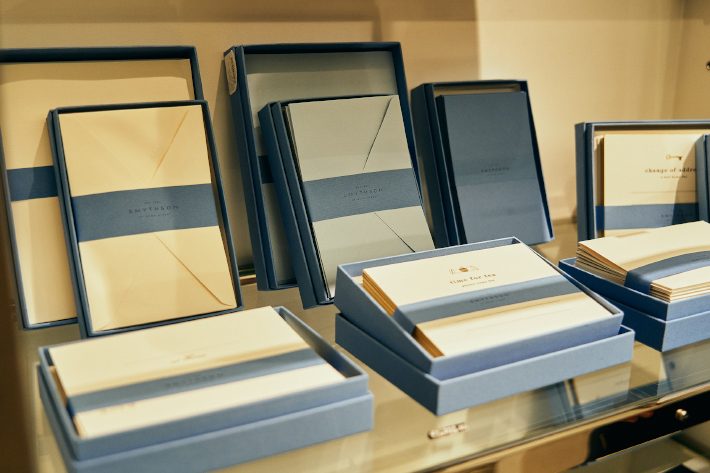
ブランドカラーであるこの2色の便せんと封筒は、高貴なブルーが美しく目を引く。封筒(25枚セット3,000円 ※以下全て税抜価格)は二重封筒になっていて、便せん(50枚セット4,000円)は一枚一枚透かしが入っている。丁寧に手作業で仕上げられているのがわかる。過度なデザインを削ぎ落としたミニマルなデザインは、英国らしい控えめな知性と気品を感じさせる。こんな上質なステーショナリーがあれば、手紙を書く行為も紳士的な嗜みとして愉しめそう。
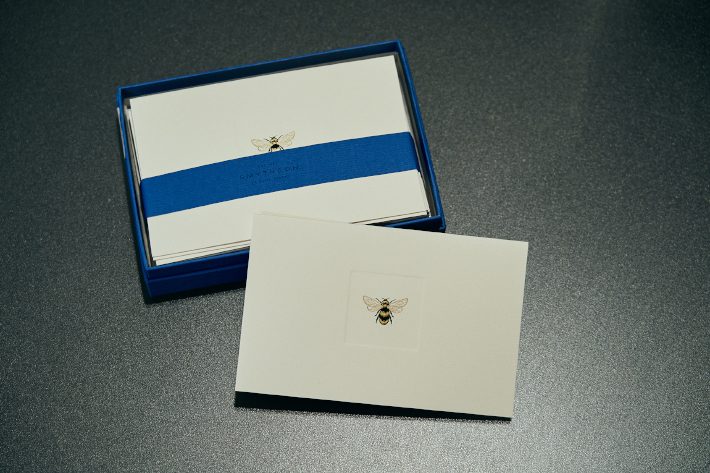
同じセクションに見つけたカードセットの種類も豊富で、ブラックとゴールドの刻印で蜂のモチーフを施したカード(5,000円)は上品な遊び心が気に入った。
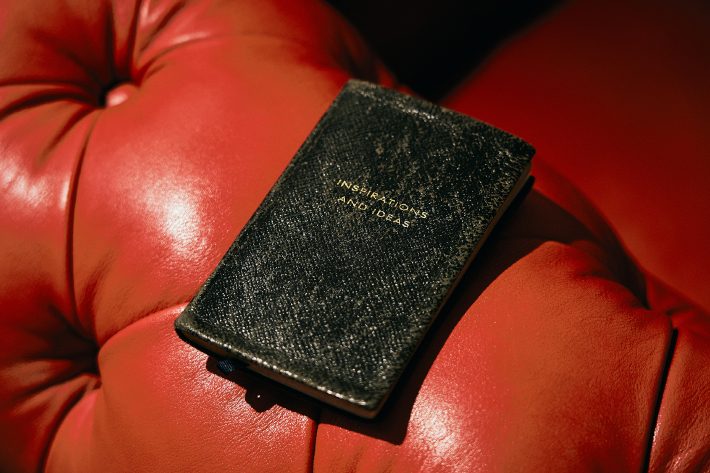
ちなみにぼくが愛用しているスマイソンは、フェザーウェイト(羽根の軽さ)と呼ばれる極薄の紙でできたポケットサイズの手帳。ちょうど手のひらに入る大きさで、机がない現場や屋外で取材するときが多いので使い勝手がいい。使い込まれたボロボロの黒い手帳にペン先を躍らせていると、まるで探偵が聞き込み調査をしてるみたいと言われる。
2つ目のミッションは、「アートのある暮らしを始める」。外出の機会がめっきり減ったいま、家で過ごす時間をもっと豊かにしたい。そのためにはアートが必要だ!
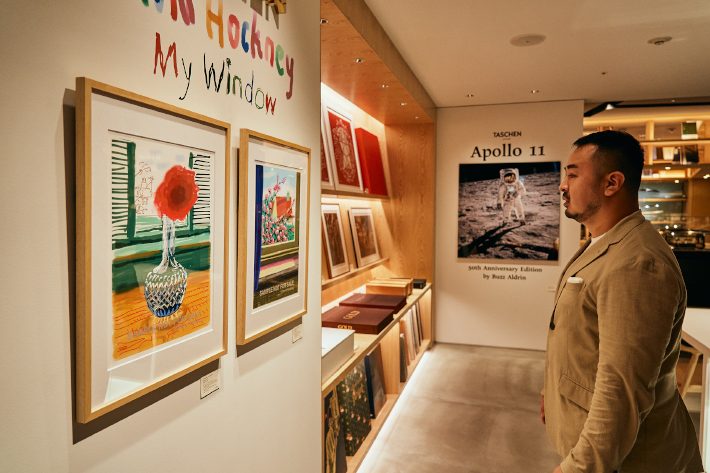
ということで、6Fの「銀座 蔦屋書店」の一角にやってきた。「ここはドイツの出版社であるタッシェンのアートエディションコーナーです。ここでは書籍に作品が付随したアートエディションを中心に、大型の本やインテリア、美術にもふさわしい本がたくさん揃いますよ。展示されている作品は購入することもできます」と写真コンシェルジュの番場文章さん。ぱっとみただけでも、アイ・ウェイウェイ、デイヴィッド・ホックニー、デイヴィッド・ベイリーといった超有名なアーティストの作品が飾ってある。サザビーズかクリスティーズのようなオークションハウスでないと手に入らないと思っていたからビックリ。
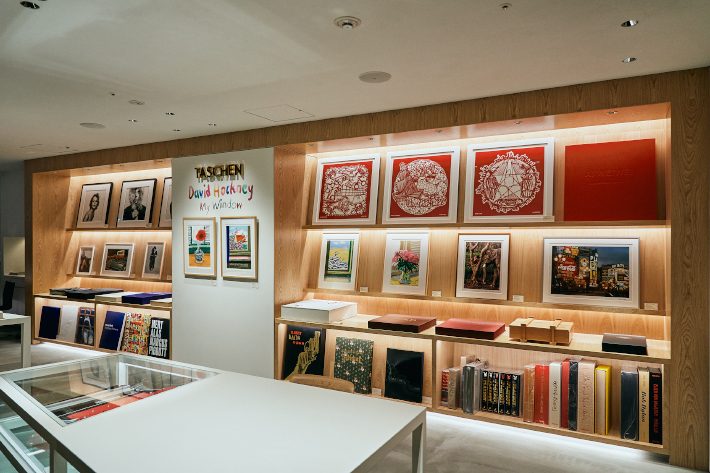
タッシェンといえば、10年前に発売されたヘルムート・ニュートンの「SUMO」ブックが衝撃的だった。それまで美しいコーヒーテーブルブックを出してきたブティック出版社が、縦横70x50cm、厚さ8cm、重さ30kgの超特大な“相撲”サイズの写真集を出したのである。すべてにニュートン自身によるサインとエディションナンバーが入り、専用メタルスタンドも巨匠フィリップ・スタルクがてがけた。タッシェンはアート界と出版界の常識を壊してきた。
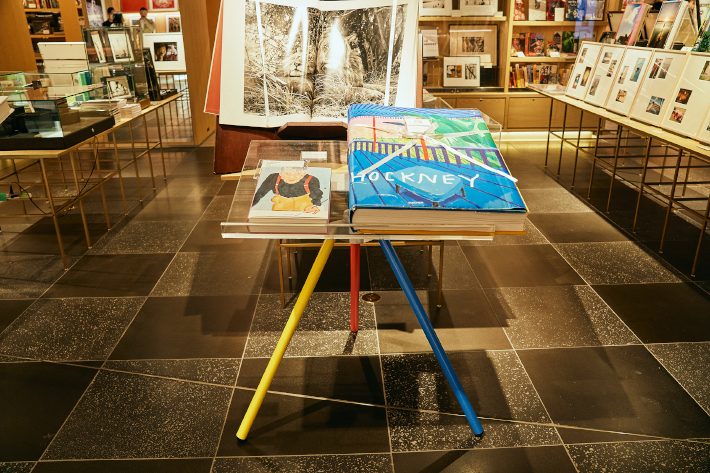
「SUMO」シリーズの最新作、デイヴィッド・ホックニーの「David Hockney. My Window」(280,000円)も展示されていた。ヨークシャーの自宅の窓から見える景色をiPhoneやiPadを使って描いた野心作だ。1000部限定サイン入り。82歳になったいまも精力的なホックニーに脱帽である。
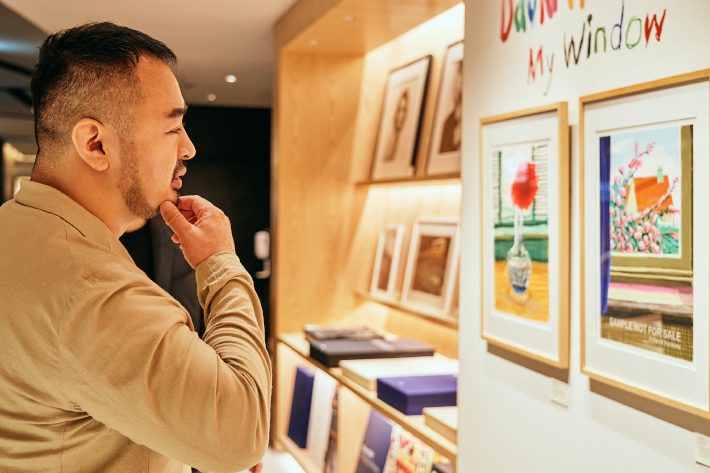
同じく82歳の写真家、デイヴィッド・ベイリーの作品も負けていない。まっさきに目に入ったのが、ファー・コートをかぶったミック・ジャガー。1964年にベイリーの処女作である写真集『Box of Pin-Ups』のために撮影されたアイコニックなポートレイトだ。6年ほど前、『GQ』の企画でベイリーの特集をしたとき、ベイリーはこの写真についてこう語っている。
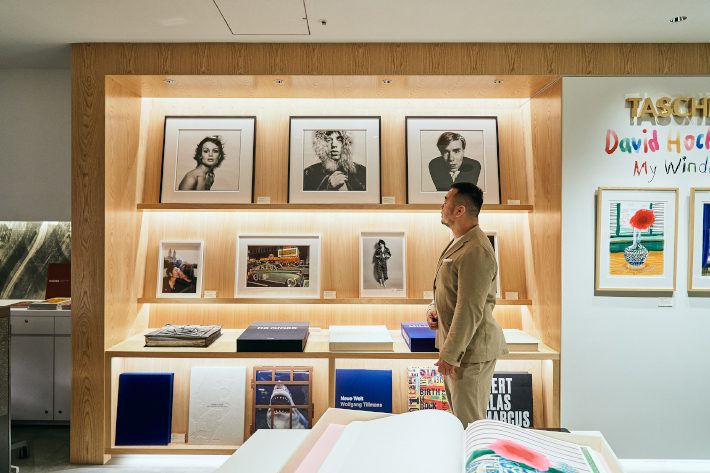
「ミックはこれをいちばん好きな写真に選んでくれた。20年ほど前に『アメリカン・フォト』誌が企画して、大物シンガーたちに彼らのいちばん好きな写真を尋ねたんだ。そのときにミックの選んだのがこれだった。表紙になったよ。私がどう思ったかって? 何も思わなかったね。だってミックに写真の何がわかるんだい?」

フォトグラファーがミュージシャンよりもロックでかっこよかった60年代のロンドン。そんな時代に親交を深めたふたりの関係性がわかるエピソードだ。
アンディ・ウォーホールやジーン・シュリンプトンといった著名人の写真にも値札がついている。シリアルナンバー入りで本人のサイン入り。なんとも希少だ。家に帰ってじっくりお財布とにらめっこして検討しよう。
さて最後のミッションは、「アートに毎日ふれる」。ホックニーの写真を家に飾らなくても、アートを日常的に愉しむことはできる。
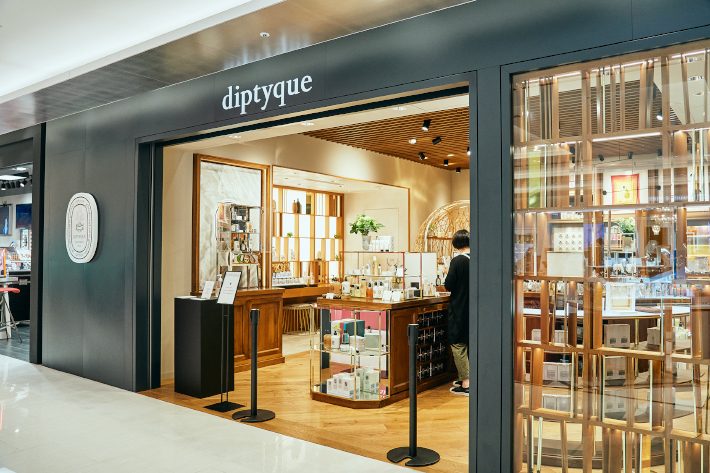
訪れたのは、B1Fの「ディプティック」。お馴染みフレグランスキャンドルで有名なパリのフレグランス・メゾンだ。お目当ては、フランス人現代美術家のジャン=ミシェル・オトニエルがディプティックとコラボして作ったという“香り”のアートだ。
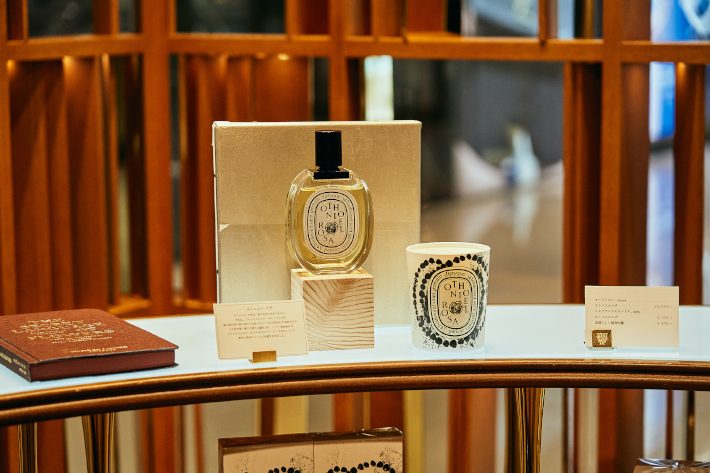
オトニエルといえば、手吹きのガラス玉をネックレスのようにつないだ立体作品で知られるアーティストだ。六本木ヒルズの毛利庭園に設置されたハート型の彫刻をみたことのある人もいるだろう。
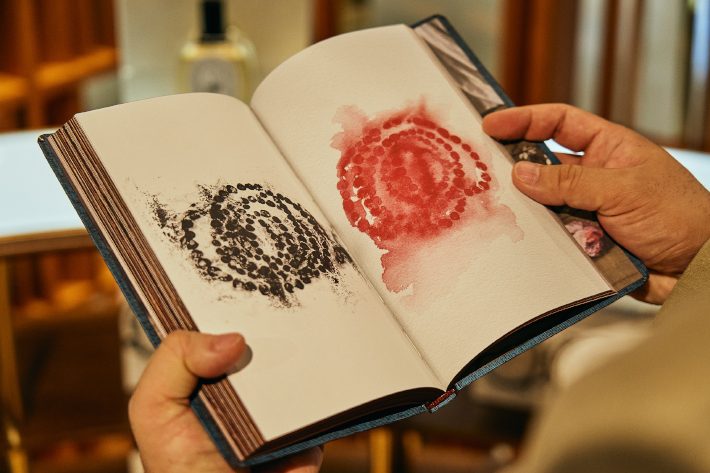
オトニエルがもうひとつ、長年題材にしてきたテーマがバラだ。なかでも2019年にルーブル美術館のピラミッド建設30周年を記念し制作した「ルーブルのバラ」を今回、フレグランスとキャンドルのデザインに採用した。

オトニエルが調香師と完成させたフレグランス(21,300円)をストアマネージャーの土橋麻美さんが吹きかけてくれた。華やかなローズの香りに、スパイシーノートをかけ合わせた香りがぶわっと広がる。ブラックペッパーを筆頭に、アンブレッドシード、アキガラウッドなど、刺激的でドラマティックな香りが続く。一方、キャンドル(8,900円)はもう少しなだらかで柔らかい香りになるそう。
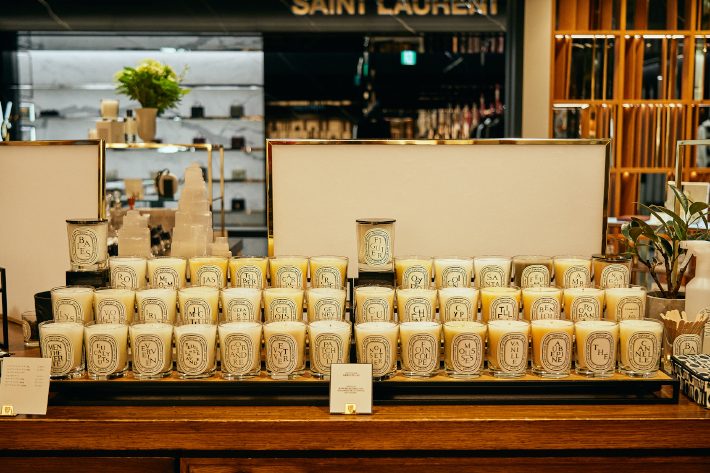
煙草を吸う人がライターに火を付ける瞬間からアドレナリンが分泌されるように、その行為自体が高揚感をもたらすことがある。ぼくの場合はキャンドルに火をつけたり、お香を焚いたりするときがそうだ。自宅での時間が長く、変化の起伏が乏しい日々だからこそ、そうやって心のスイッチを切り替えたい。

もうひとつ偶然目に留まったのが、なんとも美しいガラス瓶のディスペンサー。中身はハンドウォッシュとハンドローションということで、試させてもらった。オレンジ色のハンドウォッシュは2種類(ともに6,900円)あってつぶつぶが入ったほうは、クラッシュしたオリーブ種子でできたスクラブ入りで手の角質や汚れを落としてくれる。マッサージを受けているように心地良い。白濁色のハンドローション(7,100円)もしっとり潤うけれどベタつかない。度重なる手洗いや消毒で手の乾燥や荒れも気になるこの頃。日用使いのアイテムが美しいとぼくらの日常も気分があがる。
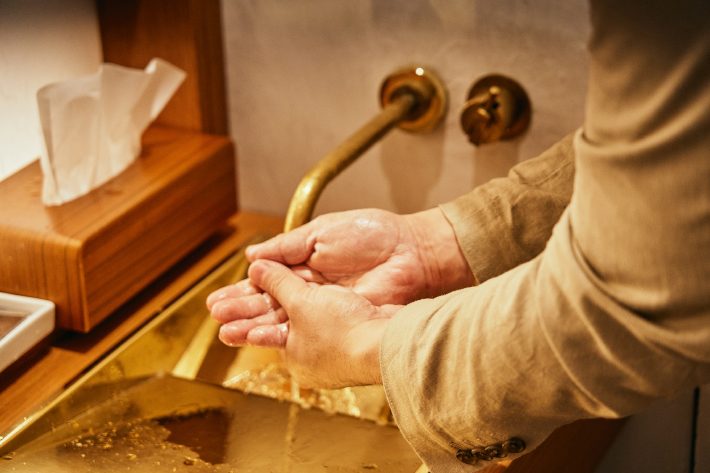
こうしてぼくのGINZA SIXをめぐるミッションは完了した。「失われたアートを取り戻す」とまではいかなかったけれど、紳士の嗜みとして、そしてインテリア、日常のシーンで、アートを取り入れるヒントがたくさんみつかった。GINZA SIXは“ぶらぶら”が苦手なぼくでも、“偶然の出会い”に出会える場所だ。ミッション・コンプリート!
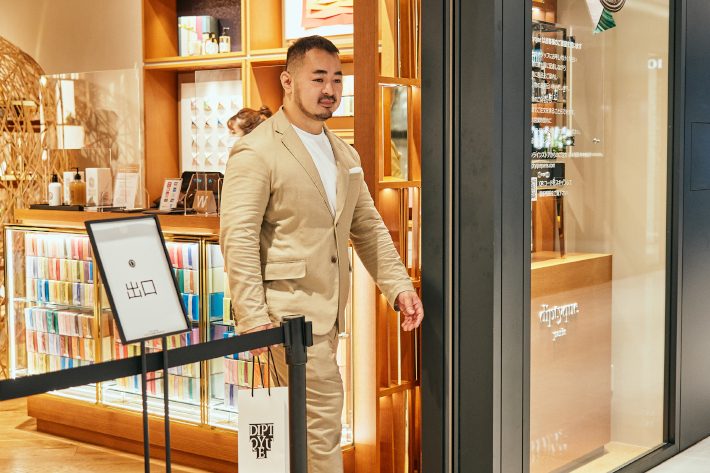
Text: Keita Takada Photos: Hiroyuki Takenouchi Edit: Yuka Okada(81)
I don’t like to shop. Wandering about aimlessly, peering in windows, walking around hoping for a chance encounter—I don’t like it at all. I investigate what I want beforehand, then I make that my purpose and charge in. I don’t wander, I move, chop-chop. That’s how I shop.
Even though I’m clear on this, the circumstances change when shopping becomes a means to an end, rather than an end in itself. My material desires have receded a bit as I’ve gotten older, but I still occasionally feel the desire to be that sort of gentleman or to live in this sort of way. Which is when shopping stops being shopping and becomes more like a mission.
Spending so much time at home due to Covid-19, I’ve recently found myself wanting to spruce up my home life. So, this time, I decided to make Finding Lost Art my theme for a visit to GINZA SIX. I may not actually be putting my life on the line like Indiana Jones or Lara Croft, but I do hope to discover art hidden within everyday life. That’s my mission today.

The first of my three missions at GINZA SIX addresses the lost art of letter writing.
Working as an editor generates lots of opportunities to write letters, including letters of appreciation and, sometimes, letters of apology. I typically only write letters when I absolutely need to, but I do sometimes receive letters and postcards with messages like “Thank you for featuring such-and-such actor,” or “I’m a fan of the singer such-and-such, it’d be great if you could do a write-up on her…” Things like that. People put their hearts into their words, and even though I know the letters aren’t directed at me personally, I’m moved all the same. Letters have that strange power.
I read recently that more than 20% of us failed to write a single letter in the past year. So, to do my part to rehabilitate this lost art, I started by looking for top-of-the-line stationery.

I visited the UK brand Smythson in Vulcanize London, a multi-brand specialty store on the fourth floor. It’s a venerable British company honored with three Royal Warrants—a Royal Warrant being something like the seal of approval of the British royal family. Store manager Naoto Kurebayashi guided me through the store.

“Smythson is known for Nile Blue, the color used on its stationery and envelopes,” Kurebayashi tells me. “When founder Frank Smythson visited Egypt, he was mesmerized by the Nile River, which inspired the color idea. Another popular color named Bond Street Blue, a shade of pale blue, is named after the location of the company’s first store.”

The stationery and envelopes in these two brand colors really grab your attention—the blues are regal and beautiful. The envelopes (3,000 yen for a set of 25; *all prices listed before tax) are double envelopes. Each piece of stationery (4,000 yen for a set of 50) bears a watermark. All have been carefully finished by hand. The minimal design, all excess trimmed away, radiates a British restraint and grace. With such refined stationery, I’ll no doubt be better prepared to approach letter writing as a gentlemanly pursuit.

In the same section, I also came across an extensive selection of card sets. This set (5,000 yen) features a buzzing bee motif imprinted with black and gold, a sophisticated whimsy I found charming.

Incidentally, my most beloved Smythson is a pocket-size featherweight diary with ultra-thin paper that fits right in the palm of your hand. It comes in handy when I’m out in the field without a desk or doing research away from home. (When I run my pen over my extremely well-worn black diary, I’ve been told, I look like a detective interviewing a witness.)
My second mission is to begin living closer to art. I want to enrich the time I spend at home—we have so few opportunities to get out compared to before. And art is essential to this pursuit!

So I headed to a certain area inside Ginza Tsutaya Books on the sixth floor. “This is the Art Edition corner of Taschen, a German publisher,” Fumiaki Bamba, photography concierge, explains. “There’s a large selection of large-format books and books that function as interior design and art, particularly the Art Edition titles, which come bundled with a single work of art. You can also purchase any of the artworks on display.” A brief glance identifies works by artists like Ai Weiwei, David Hockney, and David Bailey. I’d been under the impression you could only get art like this through auction houses like Sotheby’s or Christie’s, so this is quite the find and a legitimate surprise.

When I think of Taschen, I think of Helmut Newton’s sensational SUMO, released ten years ago. Taschen enjoys a reputation as a boutique publisher of beautiful coffee table books, but this was a giant 70 × 50-centimeter sumo-sized photo collection weighing 30 kilograms and measuring eight centimeters thick. Each copy was personally signed by Newton and numbered and included a bespoke stand designed by design heavyweight Philippe Starck. With SUMO, Taschen rather dramatically upended conventional wisdom in both art and publishing.

David Hockney’s My Window (280,000 yen), the latest in the SUMO series, is also here on display. Views from the window of the artist’s Yorkshire home are drawn using an iPhone or iPad—an ambitious approach. Each of the 1,000 copies of this limited edition is signed. I have to tip my hat to David Hockney, who remains vigorous even at 82.

The works by photographer David Bailey, also 82, are no less dynamic. Right before me here is Mick Jagger in a fur coat, an iconic portrait taken for Bailey’s Box of Pin-Ups portfolio in 1964. When I interviewed the artist for a GQ piece around six years ago, Bailey had the following to say about this photo:

“Mick chose this as his favorite photograph of him. Around twenty years ago, the magazine American Photo ran a feature that asked superstar singers about their favorite photos. Mine was the one Mick chose. It was the cover. What did I think? I didn’t think anything. What does Mick know about photography!”

In London’s Swinging Sixties, photographers were even cooler and more rock-and-roll than musicians. This little exchange tells us something about the relationship between the two luminaries, who became friends over time.
Here I also see Bailey’s portraits of Andy Warhol, Jean Shrimpton, and other celebrities, each with a price tag, all numbered and signed by the artist. How rare! I think I’ll go home and have a stare-down with my wallet as I evaluate the temptation.
My last mission is to experience art every day, something I believe to be possible even if I don’t end up with a Hockney print on my wall.

I visit diptyque on the first belowground floor, a Parisian fragrance maison renowned for its fragrance candles. I’m looking for a certain piece of—fragrance art?—created in collaboration with diptyque by Jean-Michel Othoniel, a contemporary French artist.

Othoniel is known for his sculptures of blown-glass spheres linked into necklace-like shapes. Some of you may have seen his heart-shaped sculpture in the Mohri Garden at Roppongi Hills.

Another perennial Othoniel theme is roses. In particular, his La Rose du Louvre, which was created in 2019, commemorates the 30th anniversary of the Pyramid at the Louvre Museum. Here it’s been transposed into a fragrance and a candle design.

Store manager Asami Tsuchihashi sprays a sample of the fragrance (21,300 yen) developed by Othoniel with a perfumer, leaving a flowery rose fragrance with spicy notes wafting about me. It’s dramatic and stimulating, with first notes of black pepper, along with ambrette seed, akigalawood, and more. The candle (8,900 yen) is a gentler, softer variation on this motif.

In the same way smokers experience a rush of anticipatory adrenaline from the moment they take out their lighter, the prelude to an experience can itself be cause for excitement. In my case, I feel the same when I light a candle or incense stick. Especially when I’m spending days at home, with so little daily variation, I light a candle, as if to reset my outlook on life.

Something else I happened to notice is these beautiful glass dispenser bottles, filled with hand wash and hand lotion, some of which I tried. Two types of the orange-colored hand wash (6,900 yen each) are offered here. The one with granules has an exfoliating element of crushed olive stones, which remove dirt and keratin from your hands. It feels great on the skin, a bit like a massage. The creamy white hand lotion (7,100 yen) moisturizes effectively, free of stickiness. We’re all washing and disinfecting our hands so often, they tend to dry out and get rough. It brightens our spirits to encounter beauty in our daily household items.

I’ve now wrapped up my three GINZA SIX missions. Find Lost Art! Well, maybe I didn’t quite accomplish that, but I did come across hints for pursuing the art of gentlemanliness and incorporating art into interior design and daily life. Even for someone like me, who would prefer not to wander about aimlessly, GINZA SIX is an ideal setting for such chance encounters. Mission accomplished!

Text: Keita Takada Photos: Hiroyuki Takenouchi Edit: Yuka Okada(81)
高田 景太
『GQ JAPAN』マネージング・エディター。福岡出身。博報堂アイ・スタジオを経て、ヘルムートラング、コーチなどのラグジュアリーブランドでマーチャンダイジング、マーケティング、PRを経験。2年間の英国滞在を経て、2010年にコンデナスト入社。エンタメ、ファッション、ライフスタイル、特集企画などを担当。


